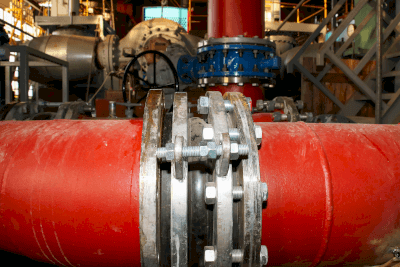What Are Rubber Vibration Isolators?

Rubber vibration isolators are rubber products that use the elasticity of rubber to reduce the transmission of vibration. It is sometimes called cushioning rubber or insulator.
Purpose of Rubber Vibration Isolator
Rubber vibration isolators are used for two main purposes:
The first is to prevent the transmission of vibrations or shocks caused by the operation of equipment to the outside.
The second is to prevent external vibrations from affecting the characteristics of equipment, such as precision instruments.
Types of Rubber Vibration Isolator and Examples of Use
Rubber vibration isolators come in a variety of shapes and sizes, including plates, and cylinders.
By placing rubber vibration isolators under generators, outdoor units of air conditioners, compressors, etc., vibrations emitted by these devices can be mitigated and transmission of vibrations to the installation base or location can be suppressed.
In addition, those integrally molded with bolts, are highly versatile and can be easily installed as long as the equipment has a bolt receptor.
In addition to bolts, there are also those integrally molded with a flange and those with a cylindrical hollow interior. Some are shaped to be attached to the mounting surface of a motor, while others are used for vibration-damping applications in the direction of the rotational axis.
For precision equipment such as optical system units that are affected by external vibrations, rubber vibration isolators are used to hold the equipment on the installation surface so that it is not affected by external vibrations.
Criteria for Selecting Rubber Vibration Isolator
1. Natural Frequency
To isolate vibration, the relationship with the natural frequency of the structure is important.
The natural frequency is the frequency at which the structure vibrates most when driven by the equipment itself or by external vibrations. The natural frequency is expressed as a unit of frequency in Hz (hertz), and the structure does not respond well and does not vibrate significantly when driven at a frequency far outside the natural frequency or when shaken from the outside. Therefore, when a structure is held in place by rubber vibration isolators, the transmission of vibration can be effectively mitigated by keeping the natural frequency of the rubber vibration isolators far away from the target vibration (i.e., the vibration of the structure being driven or the vibration of the location where it is installed).
This is the same when using the rubber as a cushioning material or as a soundproofing material.
2. Factors That Determine the Characteristics of Rubber Vibration Isolator
As mentioned above, rubber vibration isolators use the elasticity of rubber to suppress the transmission of vibration. Their characteristics are determined by the spring constant, which expresses elasticity.
By selecting the appropriate shape and dimensions, the spring constant of rubber vibration isolators can be set to any value in the up/down, left/right, and front/rear directions. It is this spring constant that causes the natural frequency to vary as mentioned above.
3. Material
NR (natural rubber) and SBR (styrene rubber), which are commonly used for rubber vibration isolators, generate little heat due to vibration and are highly durable.
However, depending on the temperature conditions of the environment in which the product is used (high or low-temperature environment), we recommend the use of CR (chloroprene rubber) rubber vibration absorbers & isolators with high weather resistance.
In addition, when oil resistance is required, NBR (nitrile or urethane rubber vibration absorbers & isolators) are suitable.